Table of Contents
- importance of Understanding Welding Defects
- Common Types of Welding Defects
- 2. Porosity: Causes and Solutions
- 3. Undercutting: Identification and Remedies
- 5. Incomplete Penetration: Diagnosis and Solutions
- 6. Spatter: Managing and Reducing
- 7. Slag Inclusions: Prevention and Removal
- 8. Distortion in Welding: Minimizing Techniques
- 9. Improper Weld Profiles: Corrections
- 10. Overlap and Spillage: Rectification
- 11. Lack of Fusion: Resolving Methods
- Conclusion
- Unique FAQs
Welding technology is widely used in various industries, but it is not always perfect. Welding problems can be caused by various factors, such as poor technology, poor material quality, or inappropriate equipment. These imperfections can affect the overall integrity and strength of the joint. In this article, we’ll take a look at the 12 most common welding defects and discuss the best ways to eliminate them.
importance of Understanding Welding Defects
Welding defects can manifest in various forms, from visible imperfections on the surface to structural weaknesses within the weld itself.
Recognizing and addressing these defects is not just a matter of cosmetic concern; it directly impacts the performance and safety of the fabricated item. Imagine a welded structure supporting a heavy load; any unnoticed defect could lead to catastrophic failure.
To ensure the longevity and reliability of welded structures, it’s imperative to delve into the common welding defects, understand their root causes, and implement effective preventive measures and corrective actions.
Common Types of Welding Defects
1. Porosity: The Invisible Culprit
Porosity, characterized by the presence of tiny air pockets in the weld, is often invisible to the naked eye but can significantly weaken the joint.
It is caused by factors such as moisture, improper shielding gas, or contaminants on the base material. Detecting and addressing porosity requires attention to detail and adherence to proper welding conditions.
2. Undercutting: Where Strength Erodes
Undercutting occurs when the base metal is eroded near the weld, forming a groove. Excessive heat or incorrect welding parameters are common culprits. Identifying undercutting is crucial, as it compromises the strength of the weld. Adjusting amperage settings and ensuring proper technique help prevent this defect.
3. Cracking: A Structural Nightmare
Cracks in welds can take various forms, from hairline fractures to more severe splits. These result from thermal stress during welding or hydrogen embrittlement. Prevention involves techniques like preheating and post-weld heat treatment to alleviate stress and ensure a robust weld.
4. Incomplete Penetration: The Hidden Flaw
Incomplete penetration occurs when the weld fails to penetrate the base material fully. This defect might not be visible on the surface, making it challenging to detect. Proper welding techniques, along with adjustments to welding parameters, are essential to ensuring complete penetration and structural integrity.
Understanding these common welding defects lays the foundation for the rest of our exploration. In the subsequent sections, we’ll delve deeper into each defect, discussing its causes, identification methods, and effective solutions. By the end, you’ll be equipped with the knowledge to produce high-quality welds, free from these pervasive issues.
2. Porosity: Causes and Solutions
Porosity remains one of the most elusive yet prevalent welding defects, often lurking within the weld without immediate visual cues. Understanding this defect, its root causes, and implementing effective solutions is vital for producing structurally sound welds.
What is porosity in welding?
Porosity refers to the presence of tiny voids or cavities within the weld metal. These voids are essentially trapped gases, such as hydrogen, nitrogen, or oxygen, that become entrapped during the welding process. While often invisible to the naked eye, porosity significantly compromises the mechanical properties of the weld, reducing its strength and durability.
Causes of Porosity
Several factors contribute to the formation of porosity in welds:
- Moisture and Contaminants: Wet or contaminated welding materials, including electrodes or base metals, can release gases when exposed to the high temperatures of welding, leading to porosity.
- Improper Shielding Gas: Inadequate or improper shielding gas can fail to protect the weld pool from atmospheric gases, resulting in porosity.
- Incorrect Welding Parameters: Variations in welding parameters, such as excessive voltage or current, can generate excessive spatter and porosity.
Solutions to Prevent Porosity
Preventing porosity involves meticulous attention to detail and adherence to specific practices.
- Material Preparation: Ensure that welding materials are clean, dry, and free from contaminants. Proper storage and handling of welding consumables is essential.
- Shielding Gas Control: Use appropriate shielding gases as per the welding process and materials. Regularly check gas flow and quality to prevent atmospheric contamination.
- Optimized Welding Parameters: Fine-tune welding parameters, including voltage, current, and travel speed, to maintain a stable arc and minimize the likelihood of porosity.
3. Undercutting: Identification and Remedies
Undercutting, a common welding defect, manifests as a groove or indentation along the base metal adjacent to the weld toe. Understanding the causes behind this phenomenon and employing appropriate remedies are crucial for maintaining the structural integrity of weld joints.
Understanding Undercutting
Undercutting occurs when excessive heat or improper welding techniques lead to the erosion of the base metal near the weld. It forms a recessed area along the edges of the weld, compromising the weld’s strength by reducing the effective cross-sectional area of the joint.
How to Identify Undercutting
Visual inspection is the primary method for identifying undercutting:
- Visible Grooves: Look for grooves or recessed areas along the edges of the weld joint, typically near the toe of the weld.
- Inconsistent Weld Profile: An irregular or uneven weld profile could indicate the presence of undercutting.
Remedies to Prevent Undercutting
Addressing and preventing undercutting involve a combination of proper technique and parameter adjustment:
- Optimal Welding Parameters: Ensure that welding parameters, including current, voltage, and travel speed, are within the recommended range. Adjustments can help control heat input and reduce the risk of undercutting.
- Proper Electrode Angle: Maintain a suitable electrode angle during welding to ensure proper deposition of filler material without excessively melting the base metal.
- Adequate Filler Material: Properly feeding the right amount of filler material helps maintain the weld profile and prevents excessive erosion of the base metal.
4. Cracking in Welds: Causes and Fixes
Cracks in welds are a critical concern, posing significant risks to the structural integrity of welded components. Understanding the various types of cracks, their root causes, and employing effective techniques for prevention and repair are essential in producing durable and reliable welds.
Types of Cracks in Welds
- Hot cracks: These cracks occur during or immediately after welding due to high temperatures and stress, typically in the weld metal or heat-affected zone.
- Cold cracks: Formed after the completion of welding as the material cools, often attributed to hydrogen embrittlement or high residual stress.
- Stress cracks: Develop gradually due to ongoing stress in the welded part, occurring over time.
Several factors contribute to the formation of cracks in welds:
- High Residual Stress: Rapid cooling or uneven heating can induce stress, leading to cracks.
- Hydrogen Embrittlement: Hydrogen absorbed during welding can cause embrittlement, resulting in cracks upon cooling.
- Incorrect Welding Technique: Inadequate preheating, improper filler material, or excessive heat input can all lead to crack formation.
Techniques to Repair and Prevent Cracks
- Preheating and Post-Weld Heat Treatment: Gradual heating and controlled cooling reduce stress and minimize the risk of cracking.
- Hydrogen Control: Employ low hydrogen electrodes and ensure a dry environment to mitigate hydrogen-induced cracking.
- Proper Technique and Parameter Adjustment: Follow correct welding procedures, including maintaining suitable arc length, travel speed, and electrode angles, to prevent excessive stress on the welded material.
5. Incomplete Penetration: Diagnosis and Solutions
Incomplete penetration in welding, though not always immediately visible, can significantly compromise the strength and reliability of a welded joint. Understanding this defect, its detection methods, and employing effective solutions are crucial for ensuring complete and robust welds.
Definition of Incomplete Penetration
Incomplete penetration occurs when the weld fails to fully penetrate the base material, leaving a void or gap between the weld and the base metal. This flaw weakens the joint, reducing its load-bearing capacity and structural integrity.
Detecting Incomplete Penetration
Identifying incomplete penetration often requires a thorough inspection:
- Visual Examination: Look for a lack of fusion between the weld and the base metal, indicated by a visible gap or inconsistency in the weld joint.
- Ultrasonic Testing: Advanced methods, such as ultrasonic testing, can accurately detect incomplete penetration by examining the internal structure of the weld.
Methods to Ensure Complete Penetration
Preventing incomplete penetration involves meticulous attention to welding parameters and techniques:
- Proper Welding Technique: Employ suitable welding techniques, ensuring proper manipulation of the electrode and maintaining the correct arc length for adequate fusion.
- Optimized Parameters: Adjust welding parameters, such as current, voltage, and travel speed, to ensure adequate heat input for full penetration.
- Preparation and Fit-Up: Ensure proper fit-up of materials and joint preparation to facilitate optimal weld penetration.
6. Spatter: Managing and Reducing
Spatter in welding, the expulsion of molten droplets, can mar the surface finish and compromise the overall quality of welds. Understanding the nature of spatter, its causes, and implementing effective management techniques are essential for achieving clean and aesthetically pleasing welds.
What is welding sputter?
Welding spatter refers to the unwanted splatter of molten metal droplets that scatter around the welding area during the welding process. These droplets can adhere to nearby surfaces, creating an unsightly appearance and potentially affecting the integrity of the weld.
Causes of Spatter
Spatter formation is influenced by several factors:
- Incorrect shielding gas: Inadequate shielding gas or improper gas flow can lead to spatter formation.
- Electrode Contamination: Contaminated electrodes or base materials can cause irregularities in the welding process, resulting in spatter.
- Voltage and Amperage Settings: Incorrect voltage and amperage settings can generate excessive heat, leading to increased spatter.
Techniques to Manage and Reduce Spatter
Reducing spatter involves a combination of preventive measures and efficient techniques:
- Clean Base Materials: Ensure that the base materials and electrodes are free from contaminants, moisture, or rust, which can contribute to spatter.
- Optimized Gas Shielding: Use the correct shielding gas and ensure appropriate flow rates to create a stable welding environment and minimize spatter.
- Adjustment of Welding Parameters: Fine-tune voltage, amperage, and wire feed speed to maintain a stable arc and reduce spatter formation.
- Anti-Spatter Solutions: Applying anti-spatter sprays or coatings on work surfaces or using anti-spatter compounds on welding equipment can help minimize spatter adherence.
7. Slag Inclusions: Prevention and Removal
Slag inclusions, a common welding defect, occur when non-metallic materials become trapped in the weld metal, compromising its integrity. Understanding the nature of slag inclusions, their causes, and employing effective prevention and removal techniques are crucial for producing high-quality welds.
Understanding Slag Inclusions
Slag inclusions refer to non-metallic materials, such as oxides, flux, or debris, that get trapped within the weld metal during the welding process. These inclusions can weaken the weld by creating voids or discontinuities, reducing its mechanical properties.
Preventing Slag Inclusions
Preventing slag inclusions involves controlling various factors, including:
- Clean Work Surfaces: Ensure that base metals and welding surfaces are free from rust, scale, oil, or other contaminants that could contribute to slag inclusions.
- Proper Electrode Angle and Travel Speed: Maintain an appropriate electrode angle and consistent travel speed to ensure proper slag flow and expulsion from the weld pool.
- Correct Electrode Manipulation: Proper manipulation and weaving of the electrode help in ensuring slag floats to the surface and can be removed easily.
Techniques to Remove Slag Inclusions
Removing slag inclusions requires careful attention to post-weld cleaning and inspection:
- Chipping and Brushing: Use a chipping hammer and wire brush to remove slag from the surface immediately after welding while the weld is still hot.
- Grinding and Cleaning: For more stubborn slag, grinding or machining the weld bead can help remove trapped inclusions.
- Visual Inspection and Quality Checks: Conduct thorough visual inspections and non-destructive testing to ensure complete removal of slag inclusions.
8. Distortion in Welding: Minimizing Techniques
Distortion, a common challenge in welding, refers to the deformation or warping of welded components due to thermal expansion and contraction during the welding process. Understanding the causes of distortion and employing effective minimization techniques are crucial for maintaining the dimensional accuracy and integrity of welded structures.
Explaining Distortion in Welding
Distortion occurs when localized heating and subsequent cooling during welding cause uneven expansion and contraction in the welded material. This phenomenon results in changes to the shape or dimensions of the welded components, often leading to misalignments or deformations.
Causes of Distortion
Several factors contribute to the occurrence of distortion in welding:
- Heat Input: High heat input during welding causes rapid expansion and contraction, leading to distortion.
- Joint Design and Fit-Up: Improper joint design or fit-up can induce higher stress concentrations and increase distortion.
- Material Properties: Different materials or varying thicknesses in the welded components respond differently to heat, contributing to distortion.
Ways to Minimize Distortion
Minimizing distortion involves a combination of proactive measures and strategic techniques:
- Controlled Welding Sequence: Adopt a welding sequence that minimizes the concentration of heat and controls the distribution of residual stresses in the welded structure.
- Fixturing and Jigging: Use fixtures or jigs to support the welded components, reducing movement and distortion during welding.
- Tack Welding and Backstep Technique: Tack welds strategically placed along the joint and employing the backstep welding technique help in managing stress and minimizing distortion.
- Strategic Welding Parameters: Adjust welding parameters, such as heat input and travel speed, to balance the necessary penetration without excessive heat input that causes distortion.
9. Improper Weld Profiles: Corrections
Improper weld profiles, characterized by irregular shapes or inconsistencies in the welded joint, can impact both the aesthetics and the mechanical strength of the weld. Understanding the causes behind improper weld profiles and implementing corrective measures are crucial for achieving welds that meet both visual and structural standards.
Defining Improper Weld Profiles
Improper weld profiles refer to deviations from the desired shape or dimensions of the weld bead. This can include excessive reinforcement, undercutting, over-welding, or inconsistent bead appearance, compromising the weld’s integrity and appearance.
Identifying Improper Weld Profiles
Recognition of improper weld profiles involves visual inspection and adherence to welding specifications:
- Visual Examination: Look for irregularities in the weld bead, such as excessive height, width, or depth, as well as inconsistencies in bead appearance or contour.
- Comparison to Welding Specifications: Measure the weld against established standards and specifications to identify deviations from the desired profile.
Corrective Measures for Better Weld Profiles
Correcting improper weld profiles requires meticulous attention to welding techniques and parameter adjustments:
- Optimized Welding Technique: Ensure consistent travel speed, electrode manipulation, and angle to achieve a uniform and properly shaped weld bead.
- Controlled Heat Input: Adjust welding parameters, such as voltage, current, and wire feed speed, to maintain the desired weld profile without excessive heat input.
- Proper Joint Preparation: Ensure adequate joint fit-up and preparation to facilitate proper deposition of the weld bead.
- Post-Weld Inspection and Modification: Conduct thorough inspections after welding and, if necessary, perform grinding or machining to correct any irregularities in the weld profile.
10. Overlap and Spillage: Rectification
Overlap and spillage, common issues in welding, occur when excessive welding material extends beyond the required boundaries of the weld joint, compromising the integrity and aesthetics of the weld. Understanding these issues, their identification, and implementing rectification techniques are crucial for producing clean and structurally sound welds.
Understanding Overlap and Spillage
Overlap refers to the protrusion of weld metal beyond the weld toe, while spillage occurs when excessive welding material spills onto adjacent surfaces. Both issues indicate the deposition of more filler material than necessary, leading to potential weaknesses in the joint and an undesirable appearance.
Spotting Overlap and Spillage
Recognition of overlap and spillage involves visual inspection and adherence to welding specifications:
- Visual Examination: Look for protruding weld material beyond the desired joint boundaries or spillage onto adjacent surfaces.
- Comparison to Welding Specifications: Measure the weld against established standards to identify deviations in the weld boundaries.
Rectifying Overlap and Spillage Issues
Rectifying overlap and spillage demands precise corrective measures:
- Optimized Welding Technique: Control the deposition of filler material by adjusting the welding parameters, such as wire feed speed and travel speed, to prevent excessive material buildup.
- Proper Electrode Manipulation: Maintain a consistent and suitable electrode angle and travel pattern to ensure controlled deposition and avoid unnecessary spillage.
- Adjustment of Welding Parameters: Fine-tune parameters like voltage, current, and arc length to maintain a stable arc and proper penetration without excessive material deposition.
11. Lack of Fusion: Resolving Methods
Lack of fusion, a common welding defect, occurs when the weld metal fails to fuse adequately with the base material, resulting in weakened joints. Understanding this issue, its causes, identification, and employing effective resolution methods are critical for ensuring strong and reliable welds.
Explanation of Lack of Fusion
Lack of fusion refers to the incomplete bonding between the weld metal and the base material. This defect creates a weak point in the weld joint, compromising its load-bearing capacity and structural integrity.
Detecting Lack of Fusion
Identification of lack of fusion involves careful visual inspection and adherence to welding specifications:
- Visual Examination: Look for incomplete bonding between the weld and the base material, indicated by visible gaps or lack of uniform fusion along the joint.
- Comparison to Welding Specifications: Compare the weld to established standards and specifications to identify deviations indicating lack of fusion.
Methods to Resolve Lack of Fusion
Addressing the lack of fusion requires precision in welding techniques and adjustments.
- Optimized Welding Technique: Ensure proper joint fit-up, electrode manipulation, and welding parameters to facilitate adequate heat and proper fusion between the weld and the base material.
- Proper Cleaning and Preparation: Thoroughly clean and prepare the joint surfaces to remove contaminants, ensuring optimal conditions for fusion.
- Adjustment of Welding Parameters: Fine-tune welding parameters such as current, voltage, and travel speed to maintain proper heat input for adequate fusion without overheating or insufficient melting.
- Post-Weld Inspection and Modification: Conduct meticulous post-weld inspections and, if necessary, perform additional welding passes or repairs to achieve proper fusion.
Conclusion
In the world of welding, perfection is the goal, but it’s the mastery over imperfections that truly defines expertise. Each defect unveiled its secrets—porosity, undercutting, cracks, incomplete penetration—demanding precise solutions. Understanding these quirks ensures welds not just bear the load but stand the test of time.
Armed with knowledge and techniques to tackle these challenges head-on, welders now possess the tools to forge flawless, resilient, and impeccable joints, marking the pinnacle of their craftsmanship in the realm of welding.
video by UNIMIG
Unique FAQs
What are common welding defects?
Common defects include porosity, cracking, lack of fusion, spatter, and incomplete penetration.
How do welding defects affect joints?
Defects weaken joints, compromising strength and durability and potentially leading to structural failure.
Can welding defects be prevented?
Yes, by adhering to proper welding techniques, material preparation, and controlling welding parameters.
How are welding defects detected?
Visual inspections, non-destructive testing, and adherence to welding standards help detect defects.
What measures fix welding defects?
Optimizing welding techniques, adjusting parameters, and meticulous post-weld inspections aid in rectifying defects.
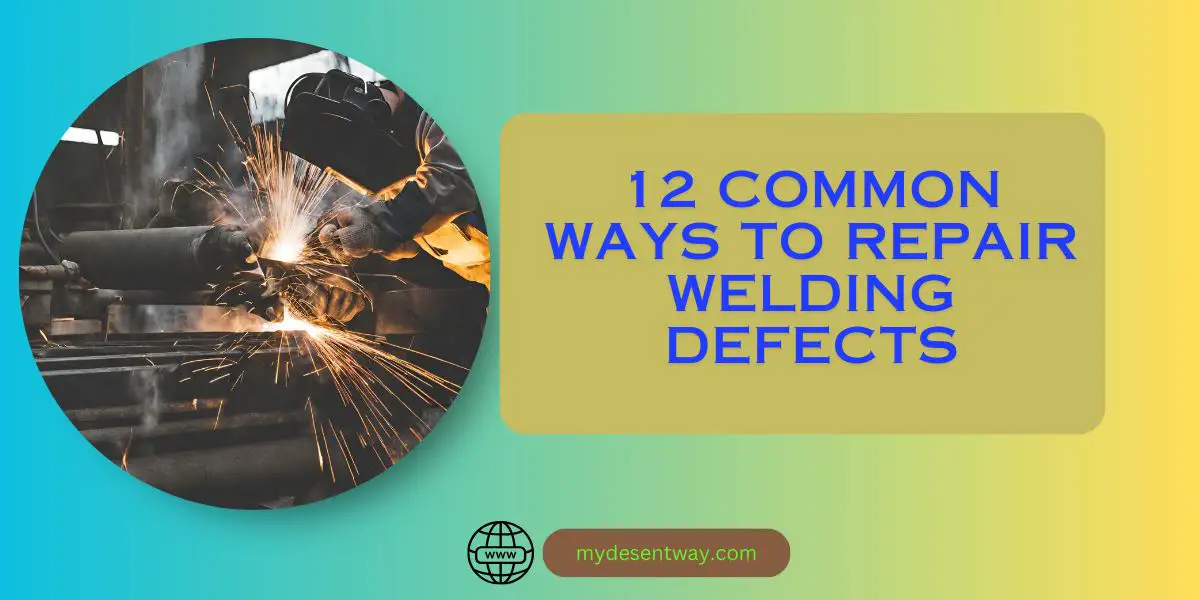
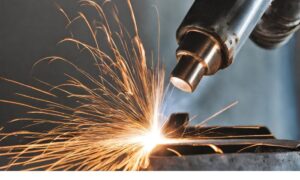
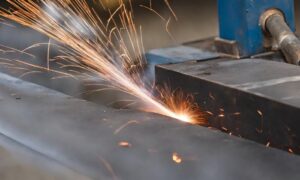
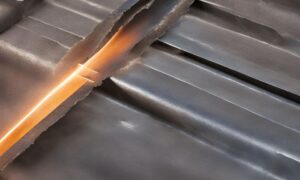
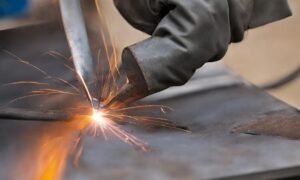
10 thoughts on “12 Common Ways to Repair Welding Defects”